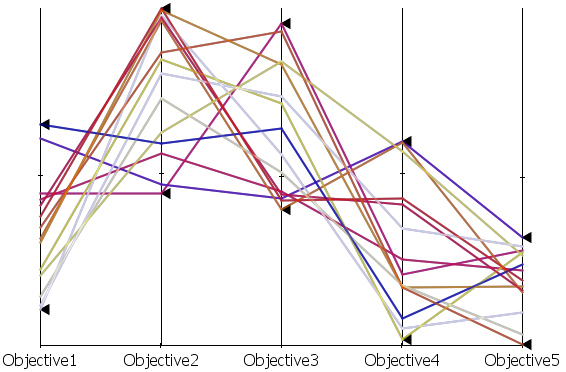Editor’s Pick: Machine Learning Boosts Modeling Methods
Automating your simulation workflows can help speed optimal design discovery.

Optimus Rev. 2018.1 process integration and design optimization platform offers a vendor-neutral, open architecture and a range of technologies intended to help organizations deploy an objective-driven engineering simulation process. Image courtesy of Noesis Solutions NV.
Latest News
January 16, 2019
Dear DE Reader:
Steven Spielberg is working on a West Side Story remake. In his masterful hands, it should be terrific. But at engineering outfits, remake is a dirty word, a flop. One way to avoid remakes is to have a competent director who unifies design and analysis teams, integrates their applications and helps you control the pace of your workflows. Today's Editors Pick of the Week aims to help you do exactly that.

Optimus Rev. 2018.1, the latest version of Noesis Solutions' process integration and design optimization (PIDO) software platform, is now available. And what does a PIDO platform do?
Essentially, you're talking about enhanced efficiency through a sweep of functionality for integrating and automating engineering workflows, exploring design space and optimizing designs for greater robustness and reliability. Optimus is vendor-neutral and has an open architecture that enables communication with 40 widely deployed CAD/CAE solutions such as CATIA, PTC Creo, Abaqus and Excel.
The upshot is that Optimus enables your organization to deploy what the company calls an “Objectives Driven Engineering” process strategy. That means simulation workflow automation, design exploration, analytics and engineering optimizations that help you capture, standardize and implement your best practices across development processes using your preferred tools. This should speed up development cycles and uncover design performance improvements, which should reduce costly remakes and improve competitiveness.
Optimus Rev. 2018.1 sees new modeling methods that leverage machine learning technologies. These are said to help teams create accurate models for low- and high-dimensional optimization problems even with a limited number of training data sets.
This new version introduces three new algorithms that are intended to help users model large data sets accurately and quickly. Additionally, there's a new Best Model algorithm that automatically finds the best-performing model for any given data set.
The platform’s Adaptive DOE (design of experiments) algorithm sees several enhancements in Optimus Rev. 2018.1. This release also extends the capabilities of its one-click optimizer, the Noesis Advanced adviser, with new support for discrete optimization problems. Optimus Rev. 2018.01 supports ANSYS Electronics Desktop on compatible operating systems, and its interfaces have been updated for the newest releases of multiple CAD/CAE solutions.
You don't want to constantly remake designs. The core technology within Optimus Rev. 2018.1 could help you automate and discover optimal designs from the start. Hit today's Editor's Pick of the Week write-up for more. Make sure to click the link to watch the overview video. Intriguing stuff.
Thanks, Pal. – Lockwood
Anthony J. Lockwood
Editor at Large, DE
More Noesis Solutions Coverage
Subscribe to our FREE magazine, FREE email newsletters or both!
Latest News
About the Author
Anthony J. Lockwood is Digital Engineering’s founding editor. He is now retired. Contact him via [email protected].
Follow DE





